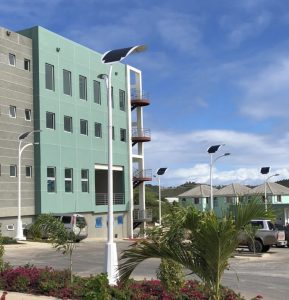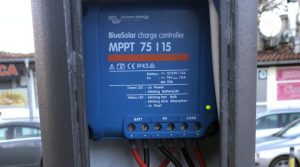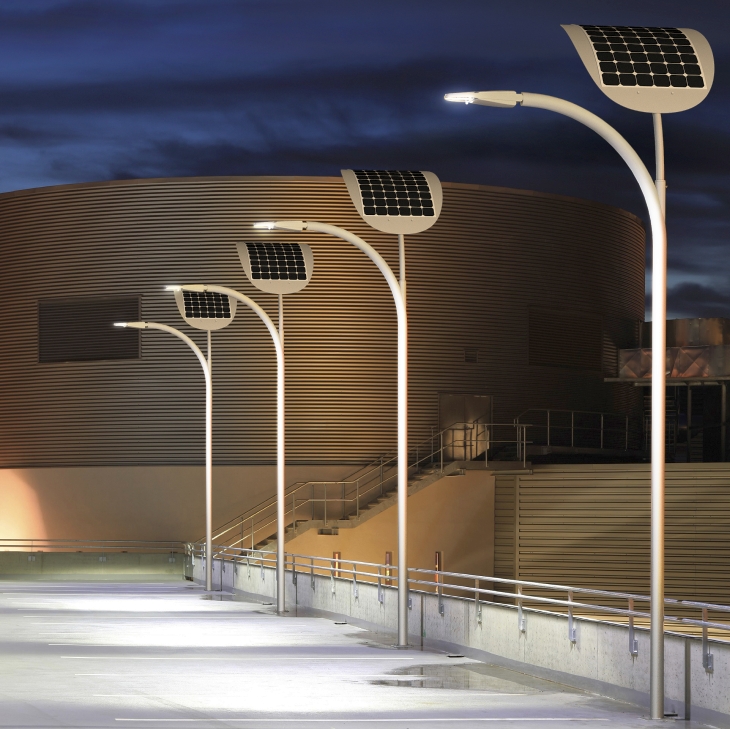Why do solar street lights fail in Ghana ?Why are our streets so dark? Why are we not seeing working solar street lights in our streets today?
The answer is simple: some stand-alone solar street lights cause more problems than they solve. In some cases they don’t solve any problems at all.In Ghana a lot of streetlights are installed during the election year ,streets are kept lit constantly and then all of a sudden the lights go out and never come on again.In recent times regular streetlights have been replaced with stand alone solar streetlights and some of them are quite fancy.

Smart Solar Street Light installation in Antigua and Barbuda
The real question is still whether this technology is economically feasible right now or whether we should wait for technology to evolve further before we take the inevitable plunge.The question of feasibility has reared its head due to bad decisions on the implementation of inadequate solar
components combined with “quick fix” solutions versus sustainable, long-term solutions.
The solar street light is a prime example of this. How many solar street lights have you seen that are not in working order? If you haven’t seen any solar street lights at all, it may be that the local municipality has not been convinced of the feasibility of these systems because so many systems have failed to date.
The solar street light is mostly sold as an LED street light with a battery box and a solar panel mounted on top of a 6 – 9 m pole. This is known as a “stand-alone” solar street light. The theory is that the solar panel will charge the battery during the day and, at night, the light will use the power stored in the battery to provide light.This idea should be considered a match made in heaven and a solution to many problems: streets lights use a lot of electricity and eliminating even only half of this consumption would lighten the strain burden on the grid. LED has a much longer life expectancy, so maintenance costs on the lights should
be minimal. So why do we not see this exciting development in our streets today? The answer lies with a combination of quality and longevity and with an understanding of the products.

Victron Energy’s highly efficient, ultra fast MPPT Solar Charge Controllers provide more efficiency in solar street lighting
The lighting units use quality components. The solar panels are 24% efficient (about as good as you can get commercially) and the LED lights are among the best at 160 lumens per watt (lm/W). The more lm/W a lamp produces the more efficient it is.A traditional incandescent light is around 15 lm/W, an energy-saving fluorescent bulb is around 60 lm/W. Easy then to see the attraction of solar power for free and lamps that are over 10 times as efficient as old fashioned bulbs – all which nicely meets companies requirements for improvements in sustainability and efficiency.
EnGoPlanet Inc ,a New York based company chose to use Victron Energy’s highly efficient, ultra fast MPPT Solar Charge Controllers, plus Victron batteries together with lighting options such as:
- Wireless internet connection for remote control and management.
- Smart Cameras.
- Sensors for collecting various environmental data.
- Mobile phone charging stations.
Their Smart Solar Street Lights are used in the Kuwait project, where 140 units have been installed. Petar Mirovic, CEO of EnGoPlanet tells me that the success of the project has interested other oil companies too, such as Saudi Aramco who are considering an installation of over 1,000 units in the coming months.
Well – that all sounds to me like a recipe for success!


